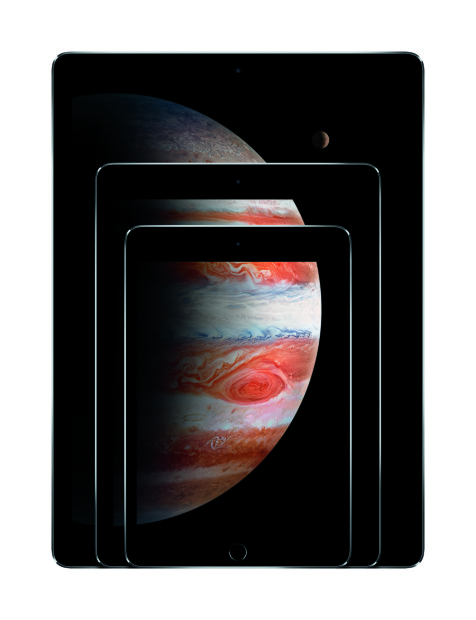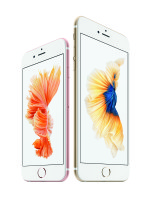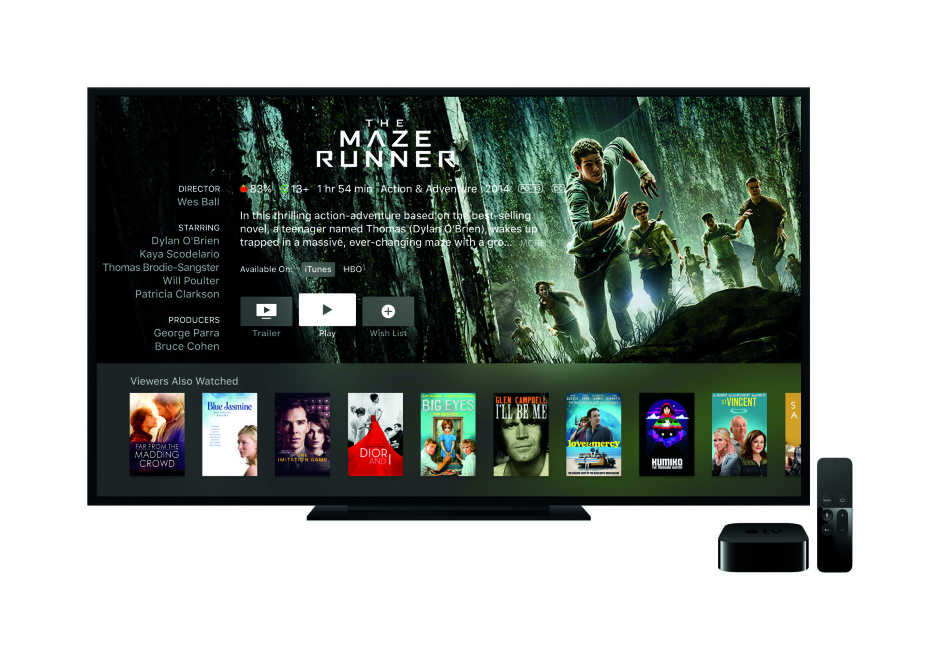A day after Apple made is September announcements, it is clear that they still hold THE technology leadership position. No company’s announcements create more buzz than Apple’s.
Here’s a quick look at the potential business impacts of the September 9, 2015 Apple announcements.
 iPad Pro. While Microsoft doesn’t get the attention for new products like Apple does, it still lays down the occasional gauntlet that makes even Apple take note. The most recent of those was the third iteration of Surface Pro, a device that has transformed Microsoft into not just a legitimate PC manufacturer, but perhaps the most innovative in the business and basic consumer markets. Apple has responded to Surface (though they would never say they responded to anything) with the 12.9” iPad Pro and its 5.6MP screen.The speed of the processor, and the updates to iOS that will ship with the device, will make it a contender as the only mobile device a person might need. Apple even highlighted their business intentions with a Microsoft Office demo during the announcement. The demos also offered up a very impressive Adobe presentation. Business is as much about images and layout these days as it is about word processing, presentations and spreadsheets. iPad Pro appears to be ready to handle all of them pretty effectively. And for those looking at Apple revenue, note that the Apple Pencil and the new Smart Keyboard are both extra, and both are priced well above similar accessories already in the market. The Logitech Ultrathin Keyboard Cover for iPad, probably the best of the third party keyboards, runs only $89.99 (Logitech has already announced intentions to offer a keyboard for the new connector with Create).
iPad Pro. While Microsoft doesn’t get the attention for new products like Apple does, it still lays down the occasional gauntlet that makes even Apple take note. The most recent of those was the third iteration of Surface Pro, a device that has transformed Microsoft into not just a legitimate PC manufacturer, but perhaps the most innovative in the business and basic consumer markets. Apple has responded to Surface (though they would never say they responded to anything) with the 12.9” iPad Pro and its 5.6MP screen.The speed of the processor, and the updates to iOS that will ship with the device, will make it a contender as the only mobile device a person might need. Apple even highlighted their business intentions with a Microsoft Office demo during the announcement. The demos also offered up a very impressive Adobe presentation. Business is as much about images and layout these days as it is about word processing, presentations and spreadsheets. iPad Pro appears to be ready to handle all of them pretty effectively. And for those looking at Apple revenue, note that the Apple Pencil and the new Smart Keyboard are both extra, and both are priced well above similar accessories already in the market. The Logitech Ultrathin Keyboard Cover for iPad, probably the best of the third party keyboards, runs only $89.99 (Logitech has already announced intentions to offer a keyboard for the new connector with Create).
The iPad Pro does raise issues with Apple’s product line, which still includes what was once the flagship notebook computer in the MacBook Air. Its low resolution screen and now seemingly weighty stature, even when compared to the new MacBook makes it seem like this September Event should probably have been the retirement party for the MacBook Air. As Apple expands its product lines, what stays and what goes, and how much the various older devices still cost in comparison doesn’t always make sense. An iPad Pro, fully decked out, will cost around $1,300 to $1,400 depending on the type of case or cover. Some are looking at that price point as an impediment to wide adoption. If the apps show up, so will business people looking for a new productivity experience. iPad Pro with iOS 9 may well be the alternative mobile users have been looking for. If that is true, the iPad Pro could do much better than expected.
 iPhone 6s and iPhone 6s Plus
iPhone 6s and iPhone 6s Plus
At the basic level, business isn’t really going to change their use of iPhones. They still make calls and run apps. I think the bigger business impact will come to other handset makers who just saw any efforts to upstage Apple pretty much upstaged. Sure, the new phones remain basically an iPhone 6, but I think as was pointed out during the presentation, these phones were not just incremental processor upgrades. The addition of 3D touch makes forced feedback with “peek.” “poke” and “quick action,” make sense for the first time—and in order to do make 3D touch work, Apple changed its glass and sensor technologies. They also changed their aluminum which, though they didn’t say it, may not be as bendy as that in the first iPhones 6s. While cool, the new UI and forced feedback will offer marginal productivity increases, probably not new use cases. But they do challenge all of the Android devices to do more than just occasionally move when touched.
What’s really going to make a difference to business is the iPhone upgrade program. For a fixed amount, Apple will make sure you get a new iPhone every year. This program, along with carrier zero-down payment programs will challenge companies who cover phone expenses to really know what’s in that monthly bill.
Apple TV
Last year there was a lot of speculation about Apple creating a line of TVs. It was never going to happen. The screen market is just too volatile. It works for a fixed number of desktop computer all-in-one devices, but the consumer market for TVs is just an unwieldy mess. Why get encumbered by the messiness of more consumer hardware when you can run your software on any screen? That’s the smart play for Apple. As for business, Apple TV will be interesting in its influence on the entertainment industry, which I will explore below. For day-to-day business, it will remain the device that powers some conference rooms in Apple friendly work environments. The new app market does create a caveat. Some developers may create some compelling Apple TV apps that haven’t been imagined yet.

In the entertainment space, it is clear V, as a device, needs reworking on multiple levels (user interface, complicated streaming options, explosion of auxiliary devices that confuse the market, complex remotes, interfaces to home automation, to name just a few). Xfinity’s X1, my provider, still feels like beta to many users, as do other attempted upgrades across systems. Apple knows UIs so let them do what they do well, and let the cable providers send the bits. That said, I don’t see Apple TV displacing set top boxes any time soon, but its not unimaginable. For those switching to streaming from cable, the success of the platform will be all about being all about streaming. Apple needs to get the best agreements down, and put as many options on the box as possible. Amazon FireTV will likely remain the biggest competitor, but even Amazon may decide it makes sense to put Amazon Video on Apple TV because reach is reach, and that is what content needs to be relevant.
And of course, Apple is bring apps. Yes, others are bringing apps to TV too, but Apple invented the app market, so it is highly likely that a couple of years from now few will remember what smart TVs or smart DVDs were. Between the apps and the familiar interface, Apple will transform consumer interactions with TVs. Interestingly, a successful Apple TV could drive down prices and increase quality for screens as suppliers concentrate on manufacturing efficiencies and new display technologies rather than creating half-baked software that won’t even get used once the TV is plugged in.
The consolidation of streaming devices is highly likely, as the producers realize that it really is about content and not owning delivery device engineering and distribution. Make the shows, collect the subscription fees and stay out of the narrowing pipeline to the consumer TV hardware. Sure, if you make your own device, you get to highlight your content, but if you don’t make your own device, you become free to license across multiple platforms, and you don’t care who wins or who looses as long as the winners stream your stuff. Google Chromecast is going to make the least sense in all of this as they require a device to run and they don’t offer original programming—they do have a cheap price though, which might keep them in play at the low end of the market–and Google still wants to know more-and-more about everybody so they can get more-and-more personal with their ads.
There are also more dedicated streaming devices for gamers that include consumer video streaming as well, like those from Razr and AMD, but Apple is aiming for a much larger, broader audience. I doubt that Apple TV will become a real came console for high-end game play, though less processor intensive games like Clash of Clans and and Badland will probably make an appearance. Those developers who already know the Apple ecosystem will likely find releasing games on Apple TV’s tvOS much easier than doing so on platforms like Steam. Don’t be surprised when Apple TV is listed as the top game console over the next couple of years. It won’t be the most robust, or the fastest, but it may be the most used as its apps broaden the game market much as the iPhone and iPad did for mobile game play.
Taps This
Some Apple events don’t mean as much as others. This is likely to be one that people look back at with significance. The iPad Pro suggests a more aggressive move into business, and the Apple TV suggests a rethinking of TV’s business model. You can spend several days at CES and not find anything nearly as disruptive, which is one of the big reasons Apple doesn’t show up.
More on this after the first of the year when we all see how the hardware, iOS 9 and El Capitan all pan out.

